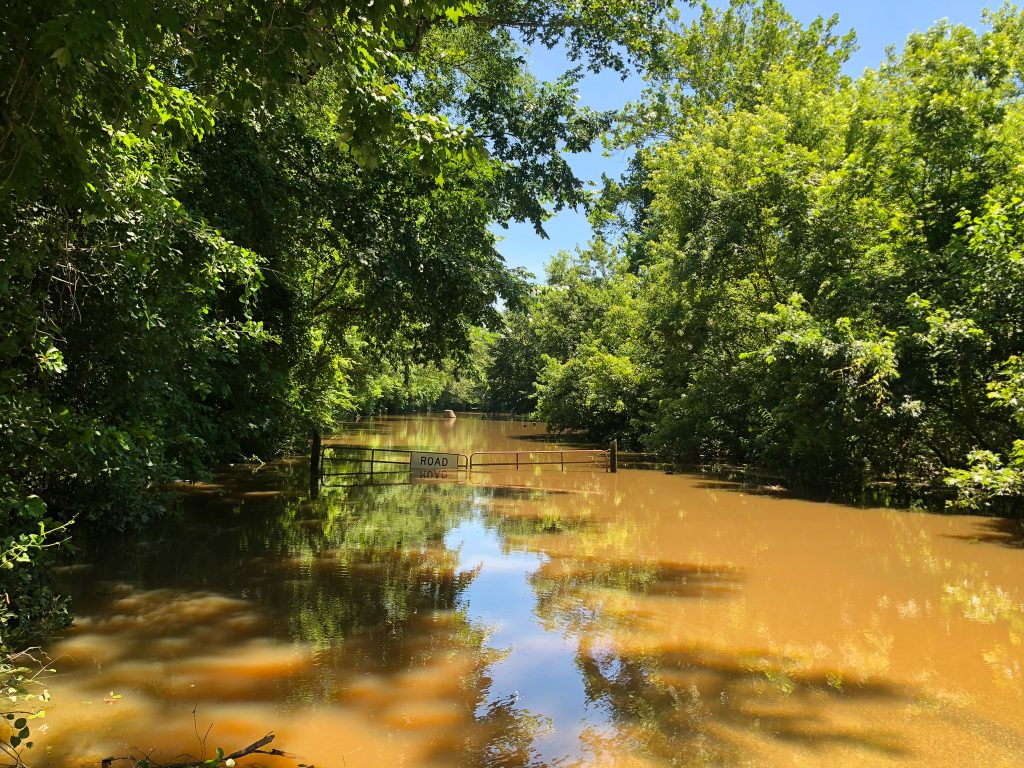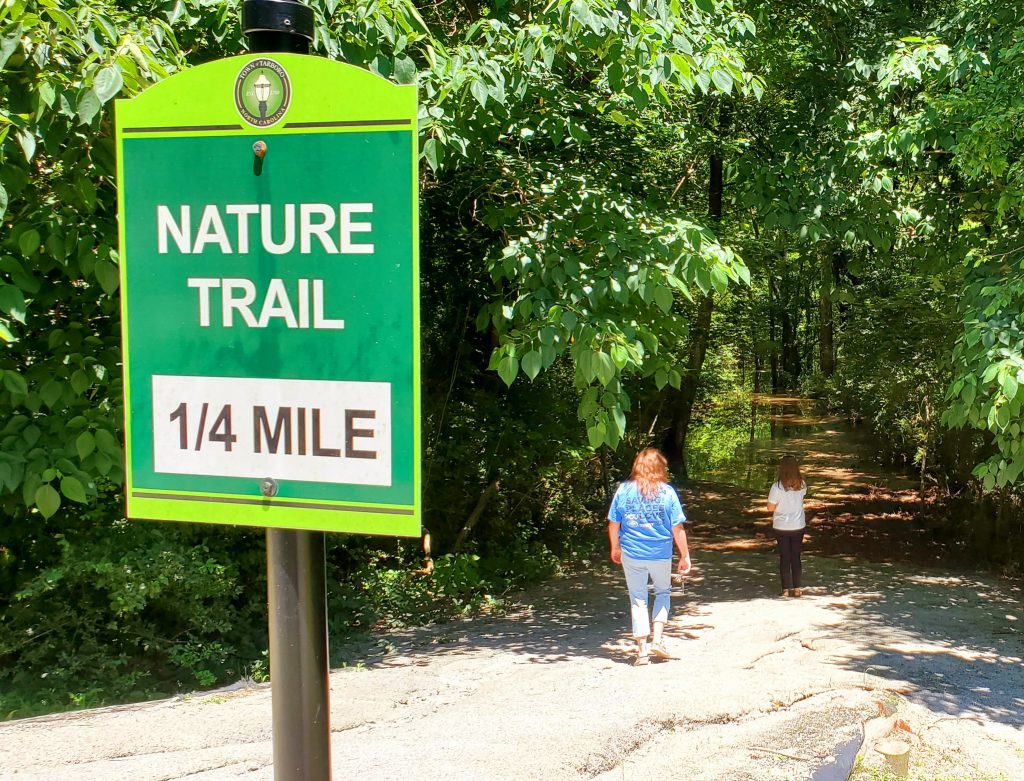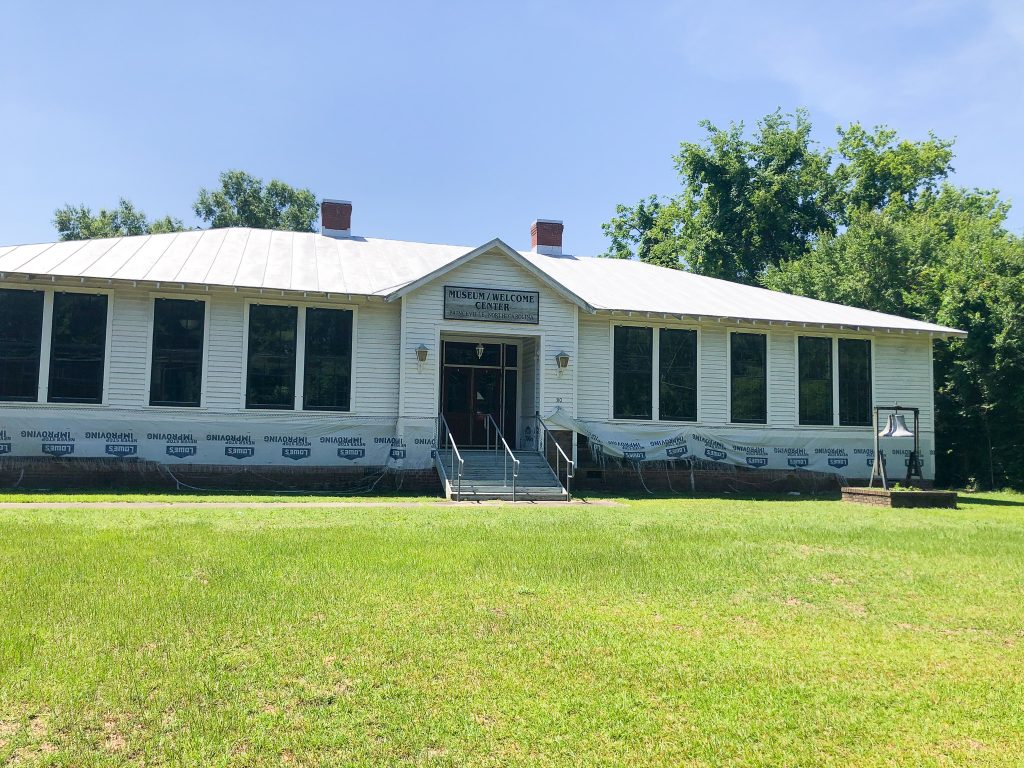Diverse Partnerships and Long-term Funding Spur First Phase in Princeville Floodprint
Since its founding as Freedom Hill in 1865, Princeville has survived the chaos of Reconstruction, the institutionalized discrimination of the Jim Crow era, and in recent years, multiple devastating floods. Resilience has long characterized this community — and of course, its people. Now, Princeville is charting a path toward a resilient, thriving future.

Sections of Princeville remain flooded. 
In September, the Princeville Board of Commissioners voted unanimously to approve a “Floodprint” to help guide how Princeville can better live with flood risks while enhancing its historic center and economic future. The plan is the result of years of work and input from the community. Town leaders and residents worked in partnership with NC State University’s Coastal Dynamics Design Lab to envision ways to better live with the risks of flooding while enhancing its historic center and economic future. Click here to view the entire Floodprint or watch the video below.
FUNDING AWARDED TO SEED COMMUNITY RESILIENCE

CTNC was recently awarded a $200,000 grant from the National Fish and Wildlife Foundation and Wells Fargo Resilient Communities Program to implement the first phase of the Floodprint: Seeding Resilience Through Restoration and Education in Princeville. “Seeding Resilience” will design and install green infrastructure on the grounds of the recently renovated and flood-proofed Princeville Elementary School building, so it can better manage future floods.
The project will reduce flood risks at the school and the adjacent Asbury Park apartments, a rental assistance complex for low-income families. It will also create an educational trail from the school toward the historic Princeville Museum. Improvement of the landscape areas around the school provides opportunities for direct water management and storage for the center of the community and all housing surrounding it. It also will beautify an area that has long served as the communal hub for the town.
But this plan goes far beyond just land. This is about serving alongside the resilient people of Princeville.
For three years, students living in Princeville had to attend schools in nearby towns after Hurricane Matthew hit the town in 2016 and flooded the town — including the school. With the reopening in January 2020, after a $6 million renovation and flood-proofing, the Princeville Elementary School welcomed back its almost 200 students and has since become a symbol of hope for revitalizing and reconnecting the community. And then, of course, COVID-19 disrupted the reopened school. CTNC and partners believe that realization of a successful, collaborative project at Princeville Elementary, visible and tangible to residents and visitors, will encourage further engagements toward sustainability and resilience in the community that is too often left to build itself back up after disaster.

“To best serve the people of Princeville, the Elementary School campaign will be a collaborative effort just as the Floodprint plan has been since its inception.” – Chris Canfield
There are many groups involved in this community-led effort.
- A Conservation Corps North Carolina crew will support implementation of the design plans, including building a trail that will connect the school with the Princeville History Museum.
- A Resilience Corps North Carolina member will work with teachers at the school to develop an environmental education curriculum related to water management.
- Design students from NC State University will collaborate with youth work crews from Conservation Corps NC and local Princeville students in planning and construction.

This is certainly an ambitious enterprise: one that requires many hands. CTNC is grateful for the partnerships in Princeville helping to build a resilient future together. Investing in North Carolina’s rich African American history through conservation-focused resources will lift up a shared vision we can all be proud to support and carry forward.
COLLABORATIVE PARTNERSHIPS MAKE COMMUNITY-LED CONSERVATION POSSIBLE
The Floodprint plan is the result of years of work among partners with the Town of Princeville, NC State University’s Coastal Dynamics Design Lab, The Conservation Fund, the Upper Coastal Plain Council of Governments and Conservation Trust for North Carolina. This project is made possible with support from Z. Smith Reynolds Foundation and The Duke Energy Foundation. Thank you to these wonderful partners.
Launching the first phase of the Floodprint is made possible by a Resilient Communities Grant from the Resilient Communities Program, a collaboration between Wells Fargo and the National Fish and Wildlife Foundation (NFWF).
We thank these entities for their generous investment and for seeing the crucial need to help communities better prepare for and respond to climate-related natural disasters by investing in green infrastructure.
“This program continues to demonstrate how local communities can use the benefits of natural ecosystems to provide for a more resilient future for our nation,” said Jeff Trandahl, executive director and CEO of NFWF. “The 11 grants we announce in partnership with Wells Fargo will work to build resilience locally, to help communities meet future challenges through natural systems and resources, and will benefit habitats for birds, fish and other wildlife.”
This has been an extraordinary journey over the last few months, but boots are now on the ground implementing the visions of so many that are deeply invested in building a thriving future for all in Princeville. Learn more about this collaborative.
**The views and conclusions contained in this document are those of the authors and should not be interpreted as representing the opinions of the National Fish and Wildlife Foundation or its funding sources. Mention of trade names or commercial products does not constitute their endorsement by the National Fish and Wildlife Foundation or its funding sources.**

